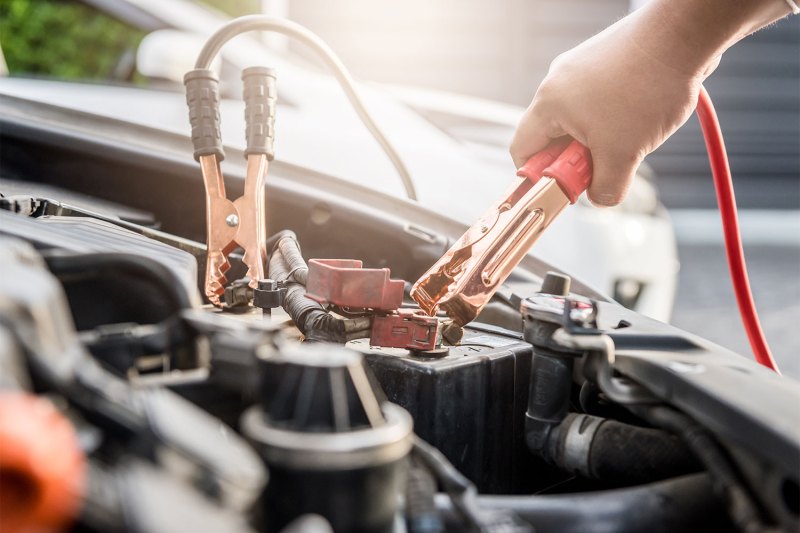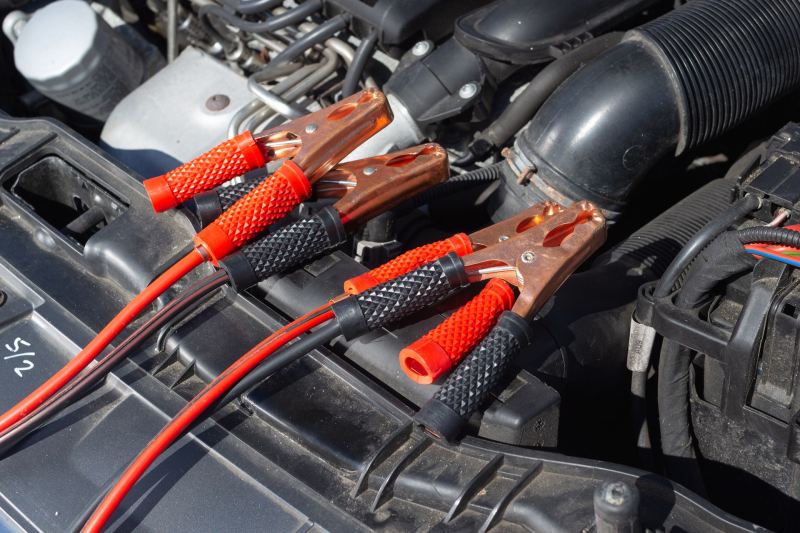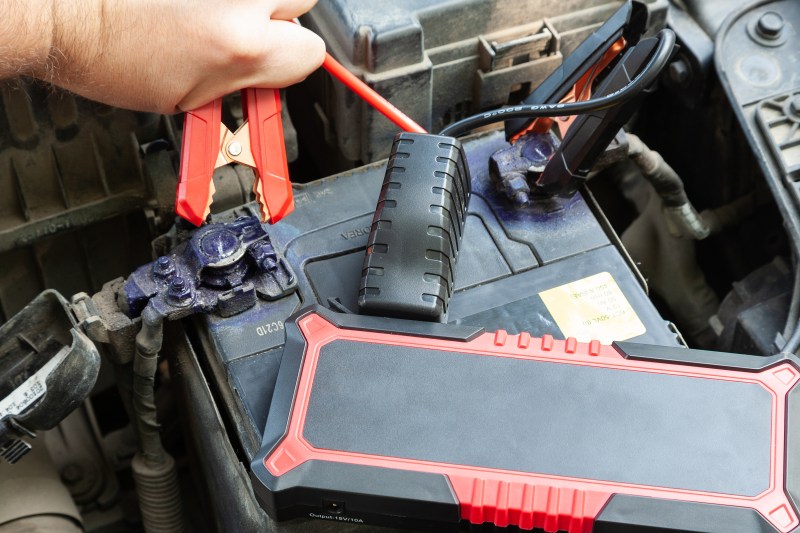The car battery is an important component of your vehicle. Without it, your car won’t start. If you have never turned a car key to hear that sad click-click-click of a starter without enough juice to power up the engine, then lucky you. If you just heard that noise a few minutes ago and now you need to know how to jump-start a car, don’t you worry; we’ve got your back.
Like changing a tire, knowing how to jump-start a car is a critical skill that every well-prepared motorist must master. Otherwise, you’d be left stranded in the middle of nowhere for hours on end. Assuming that you are preparing for a summer road trip, we’ve assembled a step-by-step tutorial on how to jump-start a car the right way. A word of warning: Jumper cables, when live, can be dangerous, so exercise caution when attempting to jump-start a vehicle.
Related Guides
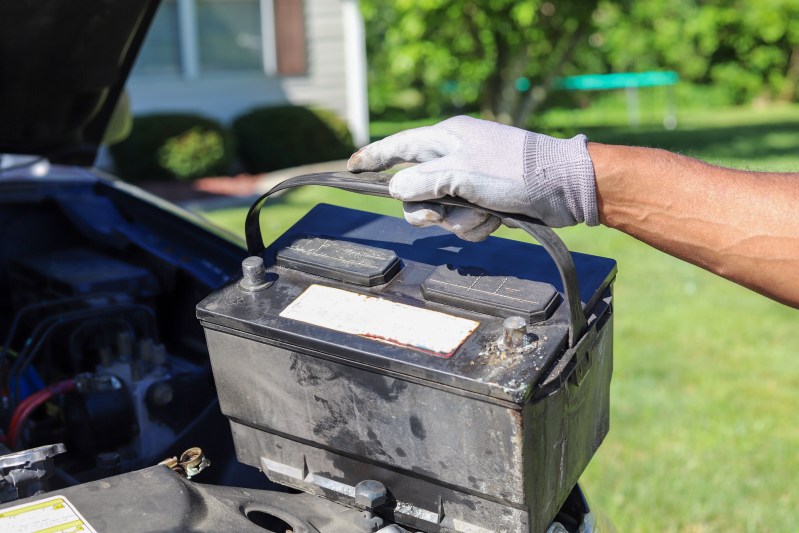
How to jump-start a car with a dead battery
You will need a pair of jumper cables and a vehicle with a functional battery to which you can connect. That’s it — not counting your dead car, of course. Yet, you should note that if your cables are too short to connect the two batteries, you can connect two sets of jumper cables to give yourself more length. So don’t feel to put out if you’re experiencing length issues.
To learn how to jump-start a car, have a look below:
- Put both cars in park (or in gear for a manual) and turn them off.
- Locate both car batteries and flip up the plastic covers over their terminals.
- Connect one clip (the one with the red cord, for ease of use, if your cables are standard red and black — if not, just note carefully which you are using) to the POSITIVE terminal of the dead battery, which will have a plus symbol (+) or the letters POS.
- Attach the other clip from the same red cable to the positive terminal on the good battery.
- Now connect the clip from the black cable to the negative terminal of the GOOD BATTERY (not the dead one).
- Finally, clip the other end of the negative clip to a metal surface under the hood of the dead vehicle — use something unpainted, like a bolt or even the rod holding open the hood. (Make sure the clip is not near the battery.)
- Now turn on the car with the good battery and let it run for a few minutes, then start the vehicle with the dead battery.
- Unhook the clips in reverse order, thank your buddy or the good Samaritan with the live battery, and off you go.
- Keep your car running for at least a half-hour to fully recharge your battery.
Just remember that your car battery may be dead again the next time you try it if the battery was worn down by age or defect; consider driving right to an auto maintenance shop to get it tested and, if need be, replaced. After all, you don’t want to be stranded on the side of the road even if you do have knowledge of how to jump a car. This handy guide should help:
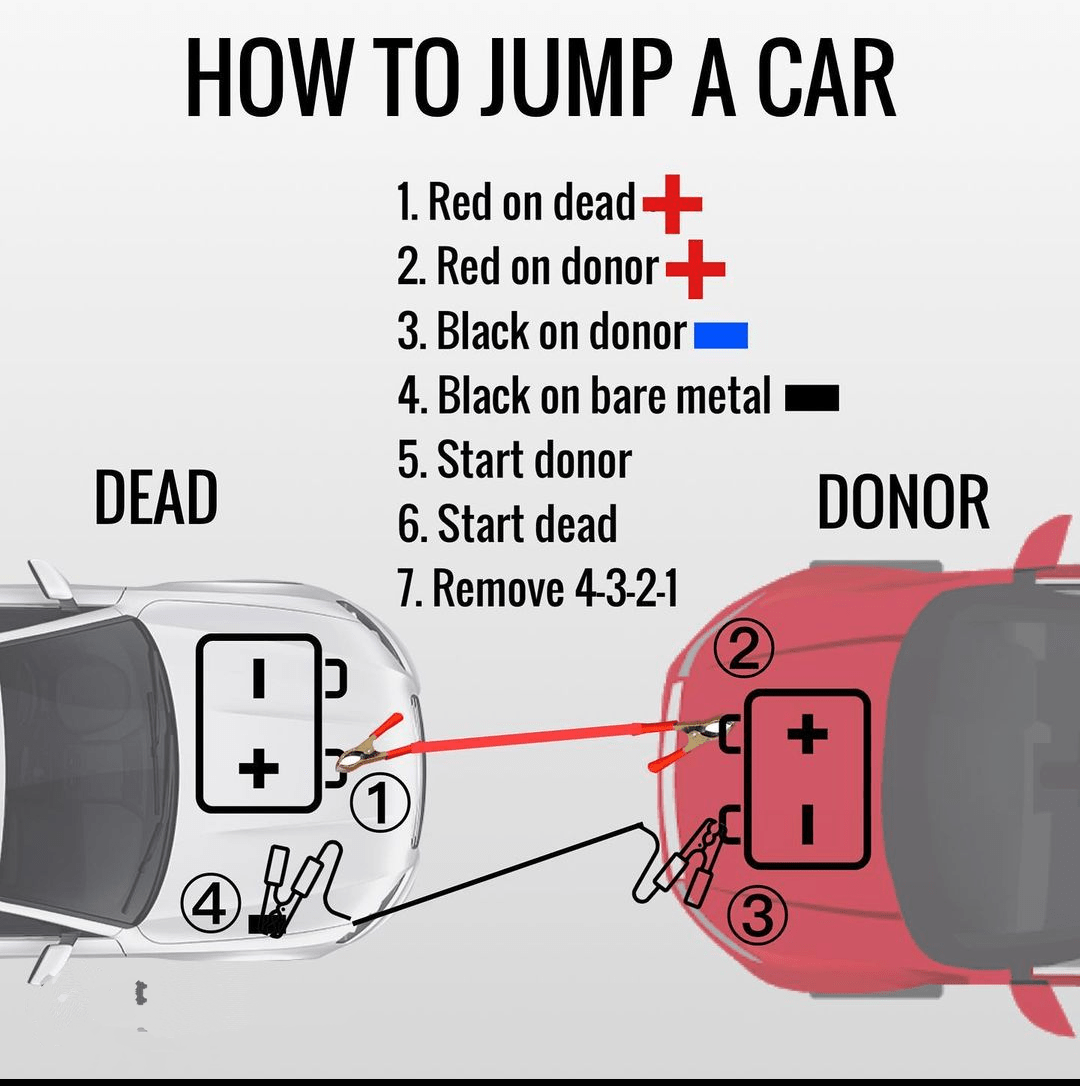
Avoid these mistakes when jump-starting a vehicle
There are a few mistakes people often make when learning how to jump start a car. For example, once jumper cables are connected to a battery, consider them live; touching two of the clips together or letting them touch the ground may cause a shower of dangerous sparks and can also be bad for the battery. You can also shock yourself or someone else pretty easily if you’re not careful.
Additionally, never try to jump-start a battery that is frozen; if the ambient temperature is below freezing and your dead vehicle is parked outside, you need to warm the battery with some sort of heater or call for professional assistance. Also, avoid connecting jumper cables to dirty battery terminals, which may prohibit a safe and complete connection. So use a brush with stiff bristles to clean a dirty terminal before you begin.
What happens if you connect negative first? – Why you should never do this
Learning how to jump start a car can be challenging, but there is one thing you should never do. When you connect your jumper cables to your battery to start the battery, you must never connect the negative (-) terminal first with the black cable on a dead or flat battery. There are many reasons why this is an incredibly bad idea.
For example, it can cause a short circuit which can damage your battery and electrical system or cause it to explode. This hazard could lead to injury or loss of life, so never connect the negative first and always the positive and then the negative to minimize the likelihood of injuries or damages. Ultimately, if you’re unsure which to connect, revert to your driving manual before jumpstarting your car.
Consider keeping a portable jump-starter device in your car
Suppose you ever drive to remote areas or live in a rather remote spot yourself. In that case, it’s a good idea to make a modest investment in a power bank that can be used to jump a car, like the Zeus Portable Jump Starter and USB Charger from Uncharted Supply Co., which packs enough power to jump-start even a larger truck and can also be used to power up small devices like phones multiple times or as a flashlight that will work for multiple days without stopping.

